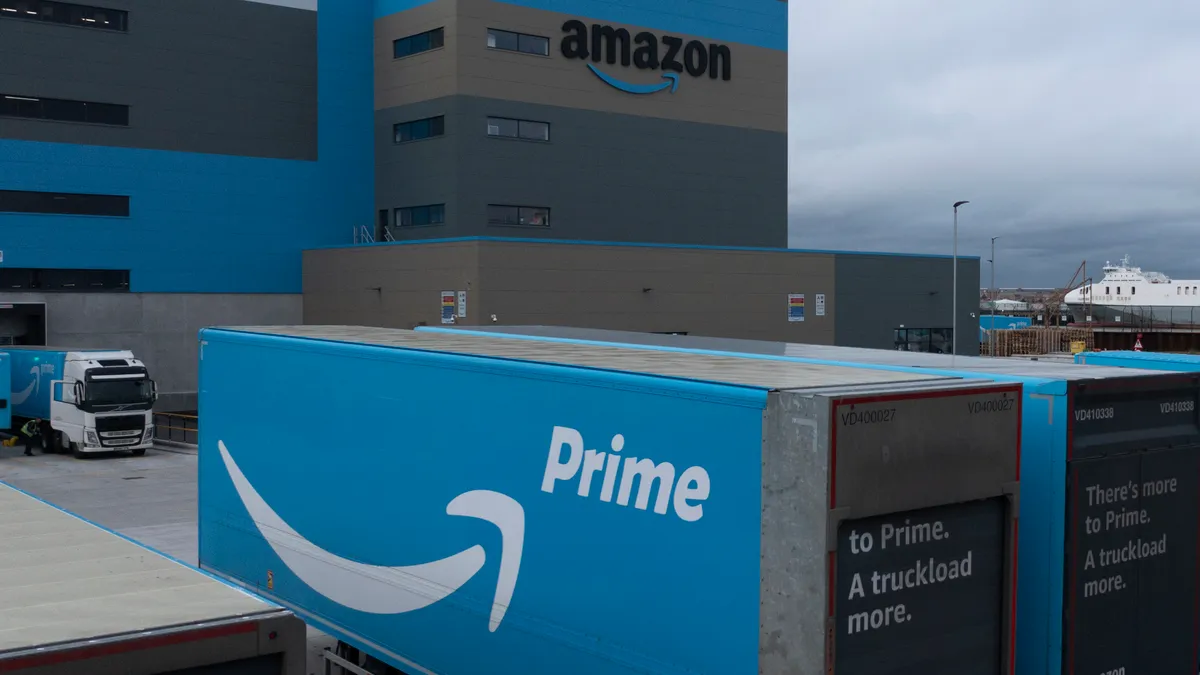Dive Brief:
- A rise in transportation and labor costs contributed to Amazon's decision to increase the price of its Prime membership in the U.S. for the first time since 2018, CFO Brian Olsavsky said on the company's Q4 earnings call.
- Amazon endured added costs of $4 billion in the quarter that came from "inflationary pressures and lost productivity and disruption in our operations," according to Olsavsky. The company encountered higher pricing from third-party carriers supporting its fulfillment network and increased employee wages to help staff its facilities.
- Adding to Amazon's staffing challenges is the spread of the omicron variant of COVID-19, which is sidelining many workers. "There's instances where you're paying twice or three times (the cost) for the same labor hour," Olsavsky said. "If someone's on leave, you're paying them and you're also paying potentially for someone who's covering the shift on overtime."
Dive Insight:
Olsavsky said in October that Amazon saw itself as a "shock absorber" of higher costs for customers and sellers, but continued constraints surrounding labor and transportation spurred the e-commerce giant to pass on the rising expenses. Other companies have done the same.
Omicron is an unwelcome wrinkle to an already challenging supply chain environment, with companies reporting added costs and further disruption due to the variant. The effects of COVID-19 variants on labor will be difficult for companies to avoid in 2022, according to an Everstream Analytics report on supply chain risks for the year. "Not only will key workers remain at risk themselves, but they may need to adjust work hours or abandon jobs to care for sick family members," per the report.
Olsavsky said omicron has created "a different type of labor issue" for the company, but added that the staffing challenges in the quarter ahead aren't as great as they were in the second half of 2021. Amazon's major employment hurdle last year was simply hiring enough people to meet demand, and the company's number of employees in Q4 grew 24% YoY.
"We have to work to make our operations more efficient as we get staffing levels up," Olsavsky said.
Amazon has nearly doubled its operations capacity in the past two years to go along with the fast growth in employment. The investment is not just to handle current volume levels, Olsavsky said, "it's also to handle getting closer to the customer and being able to ship faster."
Amazon needs its logistics network to be able to support faster shipping so it can expand the reach of its same-day delivery offering. Free same-day delivery for Amazon Prime members in the U.S. has expanded from 48 metro areas to more than 90 since 2018, according to a news release.















